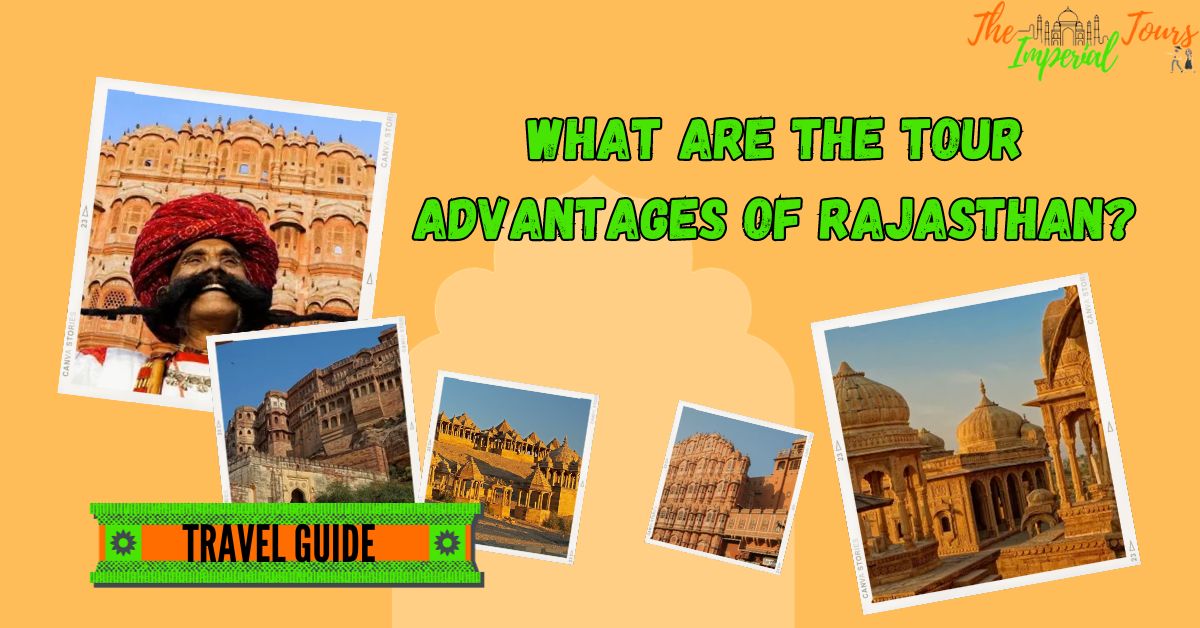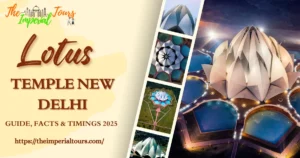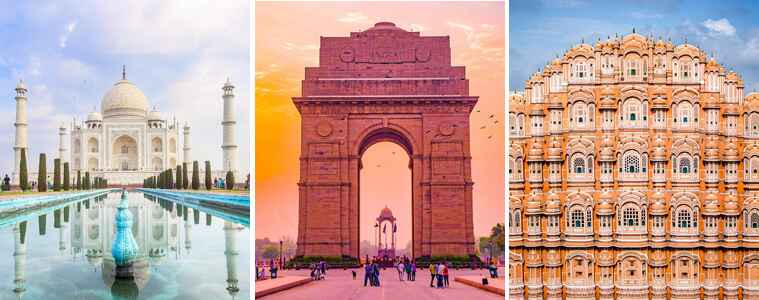Unveiling the Tour Advantages of Rajasthan: A Journey Through Royal Splendor
Rajasthan, a tapestry of opulent palaces, vibrant bazaars, and arid deserts, stands as a jewel in India’s crown. Its allure lies not only in its architectural marvels but also in the rich tapestry of culture and history it unfurls. Let us embark on a journey through the tour advantages of Rajasthan, where every step echoes with tales of valor and grandeur.
Historical Resplendence
Rajasthan is a living museum, where time seems to have paused to narrate stories of bygone eras. The colossal forts of Amber and Chittorgarh, along with numerous other architectural marvels, showcase the tour advantages of Rajasthan. These formidable structures bear witness to the valor of Rajput warriors, their walls echoing with the resonance of battles fought and won. Each fortification, adorned with intricately carved motifs, is a testament to the architectural prowess of its time.
Intricate frescoes grace the havelis of Shekhawati, portraying a vivid tableau of life in centuries past. These artful depictions, often overlooked, are a testament to the artistic finesse of the region.
Cultural Kaleidoscope
Explore the tour advantages of Rajasthan amidst the vivaciousness of its unparalleled culture. Dive into the kaleidoscope of colors at the Pushkar Camel Fair, experiencing the energetic trading and gaining insight into the thriving nomadic life of Rajasthan. Additionally, immerse yourself in the intellectual fervor of the Jaipur Literature Festival, where literary minds from around the globe converge, turning Jaipur into a melting pot of ideas and intellect.
Ghoomar, a traditional folk dance, and Kalbelia, performed by the Kalbelia tribe, enthrall with their graceful movements and rhythmic beats. These dances, steeped in tradition, serve as windows into the cultural mosaic of Rajasthan.
Architectural Grandeur
The palaces of Rajasthan, each a symphony of marble and sandstone, exude a timeless elegance. The City Palace of Udaipur , with its mirrored chambers and ornate balconies, is a testament to the refined taste of the Mewar dynasty. The Hawa Mahal of Jaipur, a latticed facade that catches the breeze, stands as an architectural marvel designed for the comfort of royal women. Explore these architectural wonders and discover the tour advantages of Rajasthan
Jantar Mantar, an astronomical observatory in Jaipur, showcases the scientific acumen of the Rajput rulers. Its colossal instruments, precise to the fraction of a degree, are a tribute to the astronomical advancements of their era.
Safari Sojourns
Explore the tour advantages of Rajasthan amidst the mesmerizing Thar Desert. Embark on a captivating camel safari through the undulating dunes, immersing yourself in the stark beauty of this golden expanse. The rhythmic gait of the camel, set against the backdrop of an endless horizon, creates a surreal experience that is unparalleled in its wonder and allure.
Ranthambore National Park presents a different kind of safari, where the elusive Bengal tiger reigns supreme. The thrill of spotting these majestic creatures in their natural habitat is an experience that lingers in memory.
Culinary Odyssey
Rajasthani cuisine, an orchestra of flavors, tantalizes taste buds with its unique blend of spices and techniques. Dal Baati Churma, a staple dish, exemplifies the culinary ingenuity of the region. The baati, a baked wheat ball, is paired with lentils and a side of churma, a delectable sweet concoction.
Laal Maas, a fiery mutton curry, and Gatte ki Sabzi, chickpea flour dumplings in a spicy gravy, offer a tantalizing journey through Rajasthani spices. The intricate play of flavors, from fiery to subtly sweet, showcases the culinary prowess that has evolved over centuries.
Unraveling the Types of Guest Homes in Rajasthan: A Comprehensive Guide
1. Palatial Retreats
Rajasthan is synonymous with opulence, and its palatial retreats exemplify this grandeur. These guest homes, often erstwhile residences of royalty, have been painstakingly restored to their former glory. The Umaid Bhawan Palace in Jodhpur, a resplendent example of Art Deco architecture, stands as an epitome of regal living. The intricately carved sandstone facade of The Taj Lake Palace in Udaipur, seemingly rising from the waters of Lake Pichola, offers a surreal experience.
Every nook and cranny of these palatial retreats tells a story, with period furniture and vintage artifacts adorning the interiors. The fusion of modern amenities with antique charm ensures a stay that is both lavish and evocative.
2. Havelis: Architectural Gems
Havelis, the ornate mansions of Rajasthan, offer a glimpse into the artistic finesse of a bygone era. The Samode Haveli in Jaipur, with its intricate frescoes and courtyards adorned with blooming bougainvillea, is a testament to Rajput aesthetics. The Mandawa Haveli in Shekhawati, a canvas of vivid murals and ornate jharokhas, transports guests to a world of artistic splendor.
The architectural detailing of these havelis, from jali work to colorful glass windows, is a testament to the craftsmanship of yesteryears. Staying in a haveli is akin to dwelling within a living museum, where history whispers through every stone.
3. Heritage Homestays
For a more intimate experience, heritage homestays offer a personal touch that is unparalleled. These are often ancestral properties, lovingly maintained by families who take pride in sharing their heritage with guests. Narain Niwas Palace in Jaipur, nestled amidst lush gardens, exudes a homely warmth that belies its regal facade. Bhainsrorgarh Fort, perched dramatically on a cliff overlooking the Chambal River, offers a glimpse into the life of Rajput nobility.
The hospitality at these heritage homestays is akin to being welcomed into a family’s embrace. Guests often have the privilege of interacting with the hosts, gaining insights into local customs and traditions.
4. Desert Camps: A Nomadic Experience
The Thar Desert, with its vast expanse of golden sands, offers a unique accommodation option – desert camps. These mobile camps, set amidst the dunes, provide a nomadic experience that is both adventurous and enchanting. The Serai in Jaisalmer, with its luxurious tents and panoramic views of the desert, redefines glamping.
The rhythmic silence of the desert night, punctuated only by the crackling of a bonfire, creates an atmosphere of tranquility that is unmatched. Waking up to the sight of the rising sun painting the dunes in hues of gold is an experience that lingers in memory.
5. Eco-Friendly Lodges: A Harmonious Retreat
In the midst of Rajasthan’s arid landscape, eco-friendly lodges stand as oases of sustainability. The Tree House Resort in Jaipur, where luxury merges seamlessly with nature, offers a verdant escape from urban life. Sher Bagh in Ranthambore, with its commitment to wildlife conservation, allows guests to immerse themselves in the natural splendor of the region.
Experience the tour advantages of Rajasthan while staying at these eco-friendly lodges. These accommodations are a testament to responsible tourism, where every aspect of the stay is designed to minimize environmental impact. Solar power, rainwater harvesting, and organic farming practices are seamlessly integrated into the guest experience.
What is the most famous dress of Rajasthan?
Explore the tour advantages of Rajasthan while immersing yourself in its rich tapestry of culture and tradition. This vibrant land, known for its vivid landscapes, boasts a sartorial heritage exemplified by the iconic Ghagra Choli. Discover the historical significance and artistic finesse of this ensemble, which remains the most famous dress of Rajasthan.
The Ghagra Choli Ensemble: A Symphony of Colors and Textures
The Ghagra Choli is a three-piece attire that exudes grace and exuberance. Its components include:
- Ghagra: The voluminous, ankle-length skirt, known as the ghagra, is a canvas for intricate embroidery, mirror work, and vibrant hues. Crafted from fine fabrics like silk, georgette, or cotton, it sways with an elegant flair as the wearer moves.
- Choli: The bodice, or choli, is a snug-fitting blouse that complements the ghagra. It is often embellished with ornate patterns, sequins, and beadwork. The choli’s design varies, ranging from traditional to contemporary, catering to diverse tastes.
- Dupatta: The ensemble is completed with a dupatta, a lightweight scarf or shawl that drapes gracefully over the shoulders. It serves both as an accessory and as a modesty cover, enhancing the overall aesthetic.
Embroidery Techniques: A Labor of Love
What elevates the Ghagra Choli to a masterpiece of Rajasthani craftsmanship is the intricate embroidery that adorns it. Various techniques are employed, each bearing the distinct imprint of the region it originates from:
- Zardozi: This opulent embroidery technique employs gold and silver threads, along with precious stones and pearls, to create lavish patterns. Originating in Persia, it found a prominent place in Rajasthani royal attire.
- Bandhej: Also known as tie-dye, this ancient art involves tying sections of the fabric with thread before dyeing, creating mesmerizing patterns. The vibrant hues and intricate designs of Bandhej are synonymous with Rajasthani textiles.
- Mirror Work: Shisha or mirror work involves the skillful incorporation of small mirrors into the fabric, reflecting light in a dazzling display. This technique imparts a distinctive sparkle to the garment.
Regional Variations: A Tapestry of Styles
Rajasthan is a mosaic of diverse cultures, and this is reflected in the myriad regional variations of the Ghagra Choli:
- Leheriya: Hailing from the city of Jaipur, Leheriya is characterized by diagonal striped patterns, resembling waves. It is a traditional attire worn during festivals and auspicious occasions.
- Gota Patti: This style, originating from the city of Jaipur, involves attaching strips of gold or silver fabric onto the garment, creating intricate patterns and designs. It is a hallmark of Rajasthani bridal wear.
- Ajrak: Indigenous to the Kutch region of Gujarat, this style features block-printed geometric and floral patterns. It exemplifies the cross-cultural influences in Rajasthani attire.
Conclusion
In conclusion, the tour advantages of Rajasthan are a tapestry woven with threads of history, culture, and natural splendor. From the resplendent forts to the kaleidoscope of cultural festivities, every facet of this land bears testimony to its royal heritage. A journey through Rajasthan is not just a tour; it is an immersion into a world where time-honored traditions flourish amidst a backdrop of architectural grandeur. This land of kings, with its palaces and deserts, invites explorers to revel in its regal embrace.
FAQ








